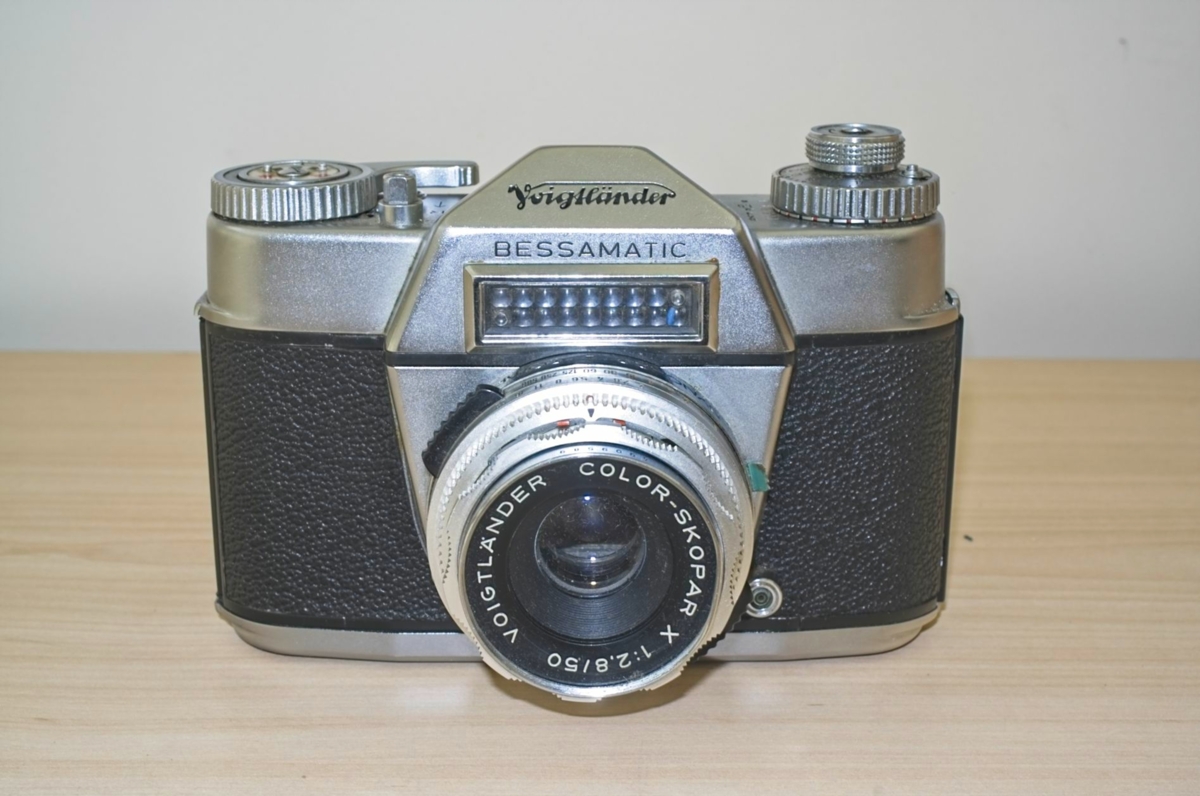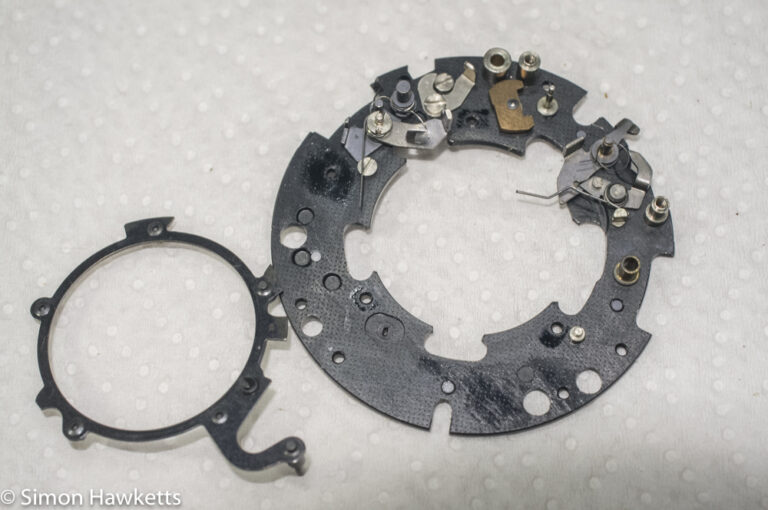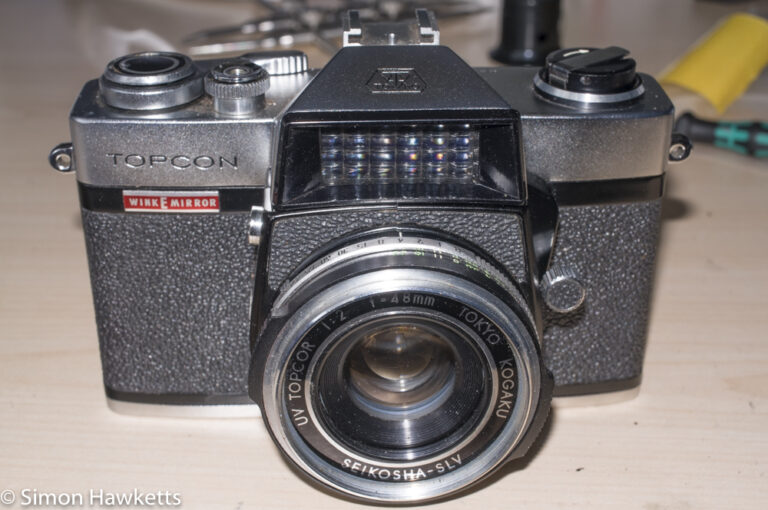Voigtlander Bessamatic SLR camera from 1962
The Voigtlander Bessamatic belongs to that family of 35 mm SLR cameras which have a leaf shutter fitted between the lens and the mirror rather than a focal plane shutter fitted between the mirror and the film. This puts it in the same class as the Topcon Unirex, Kodak Retina Reflex and Kowa SE to name just three I’ve reviewed on this blog.
Voigtlander Bessamatic Images
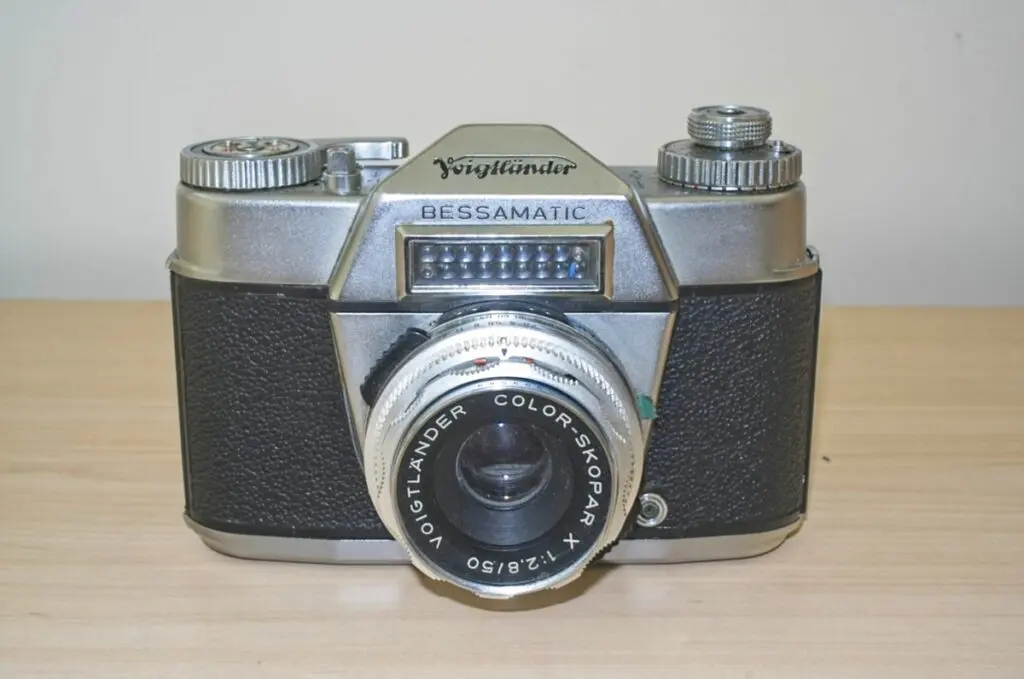
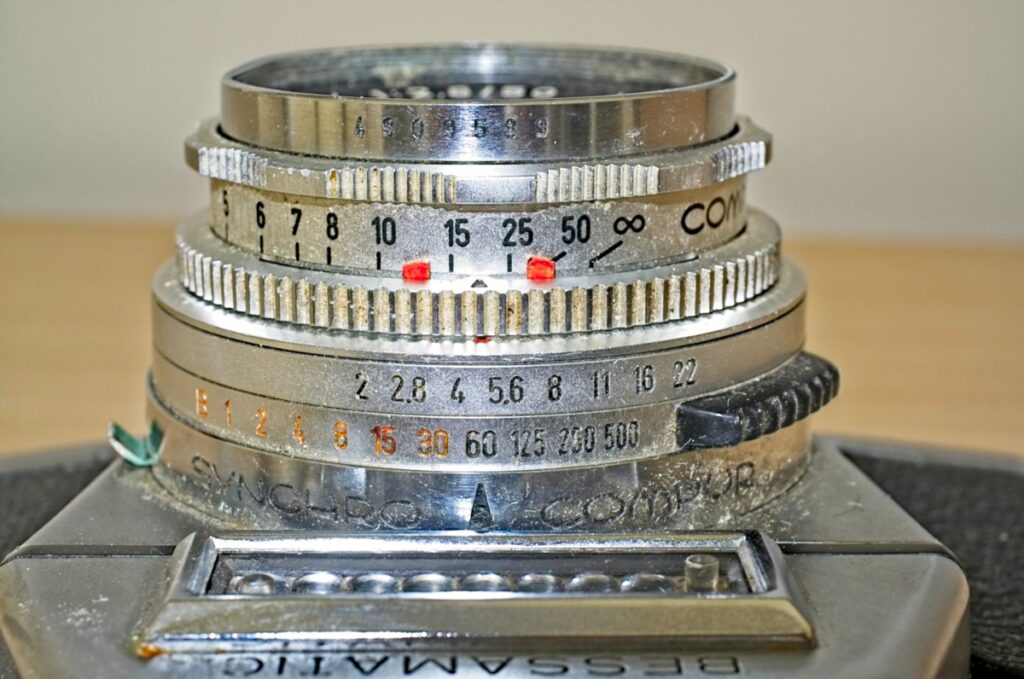

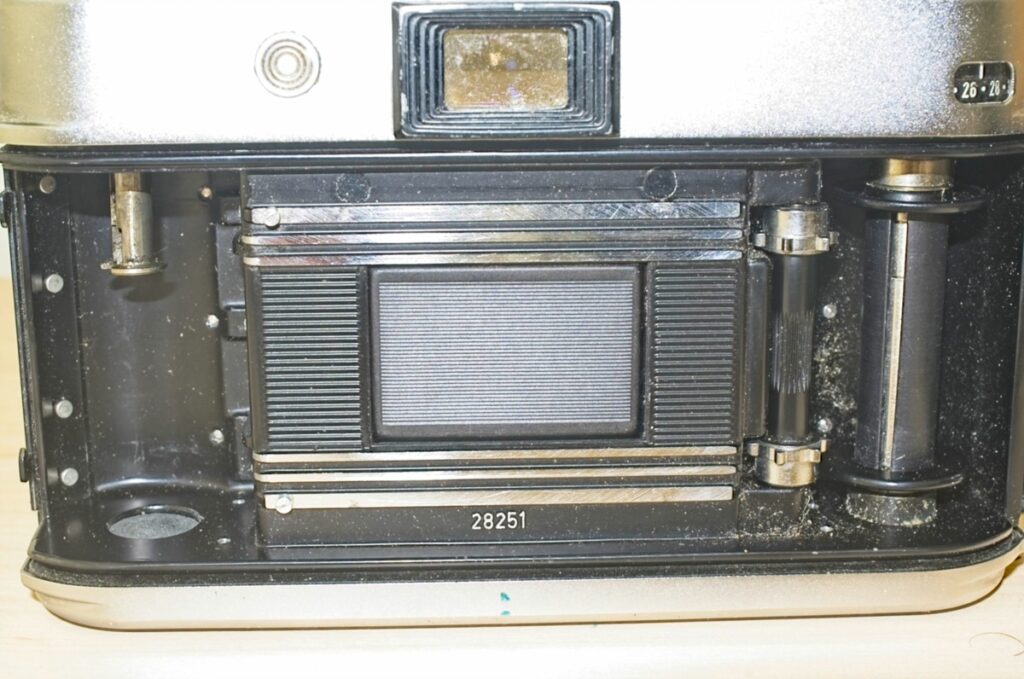
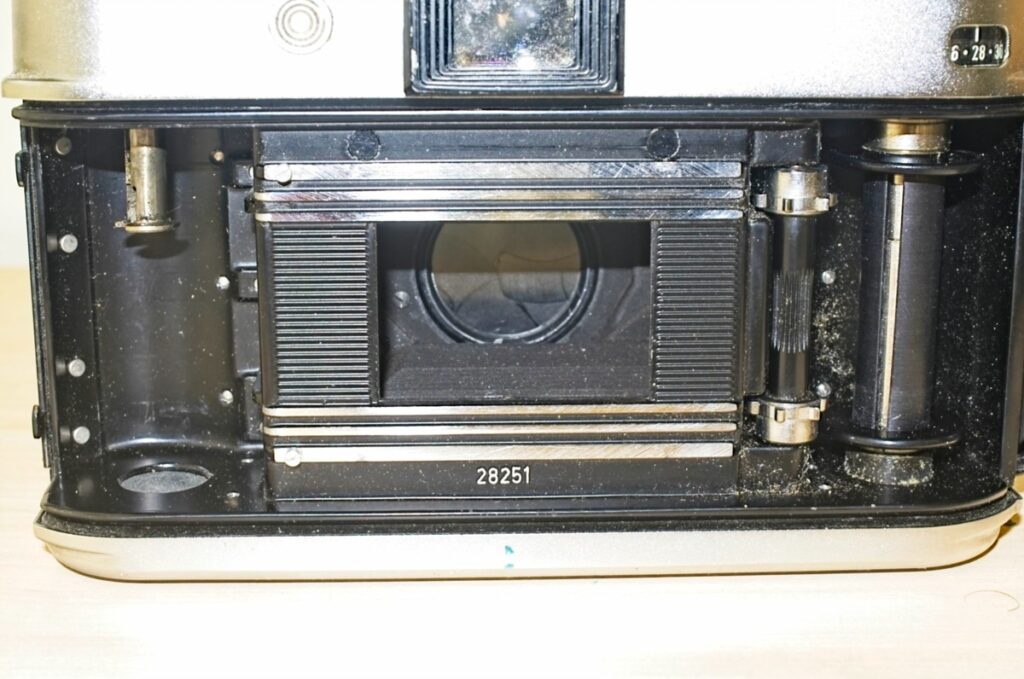
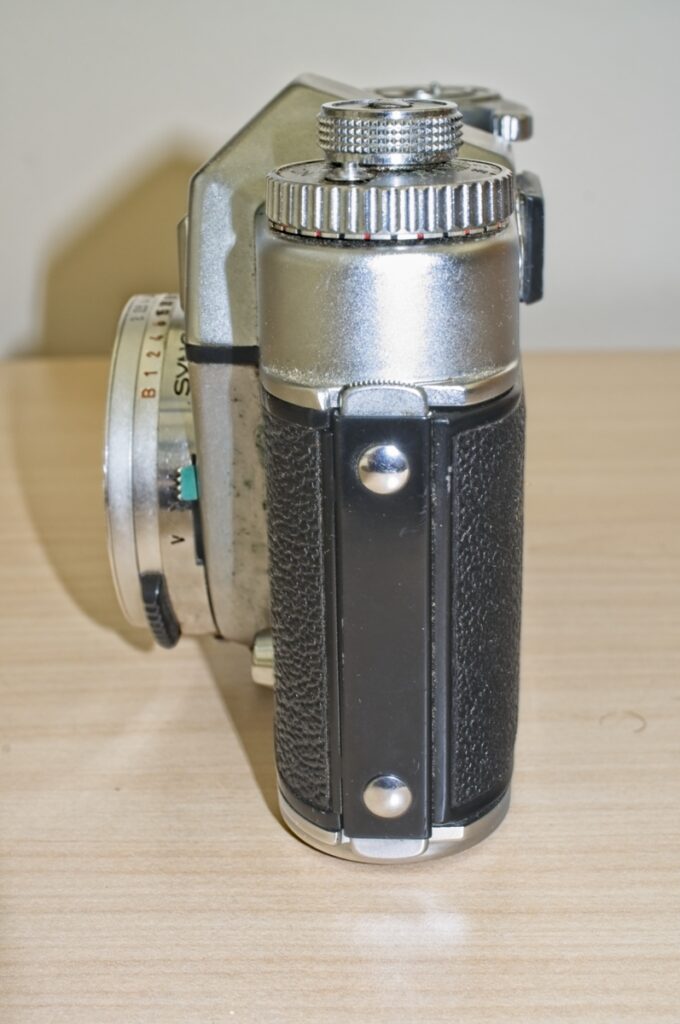
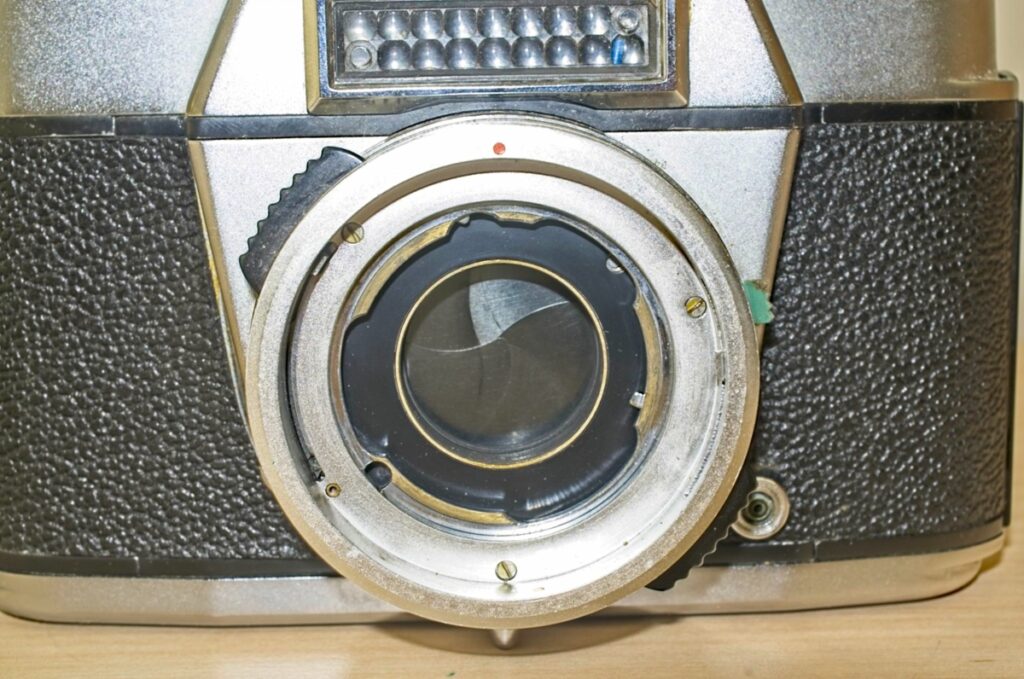
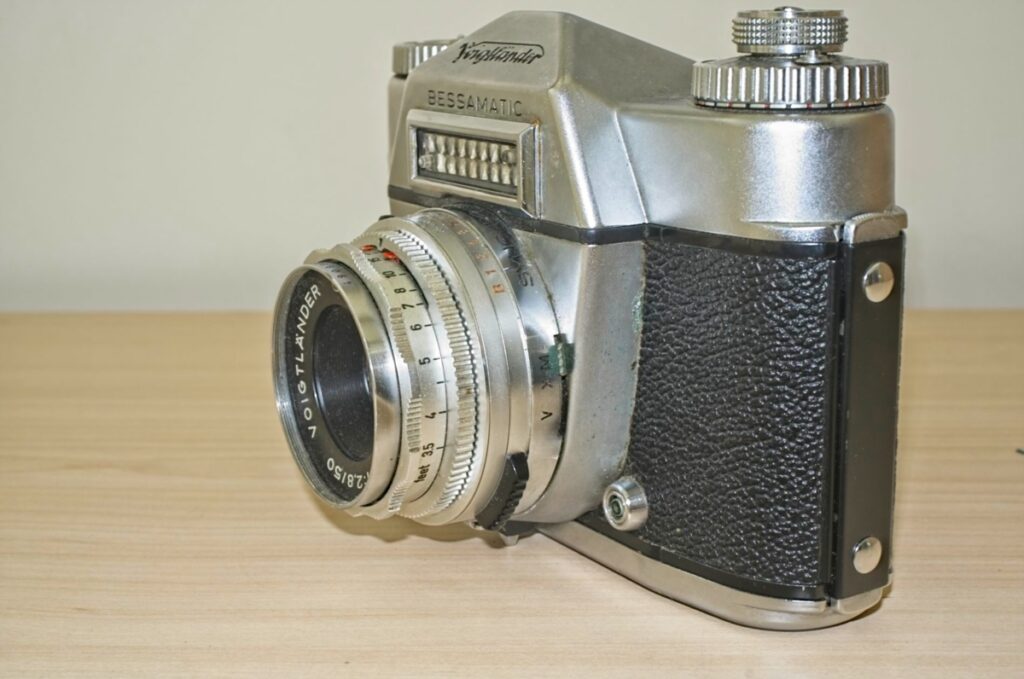
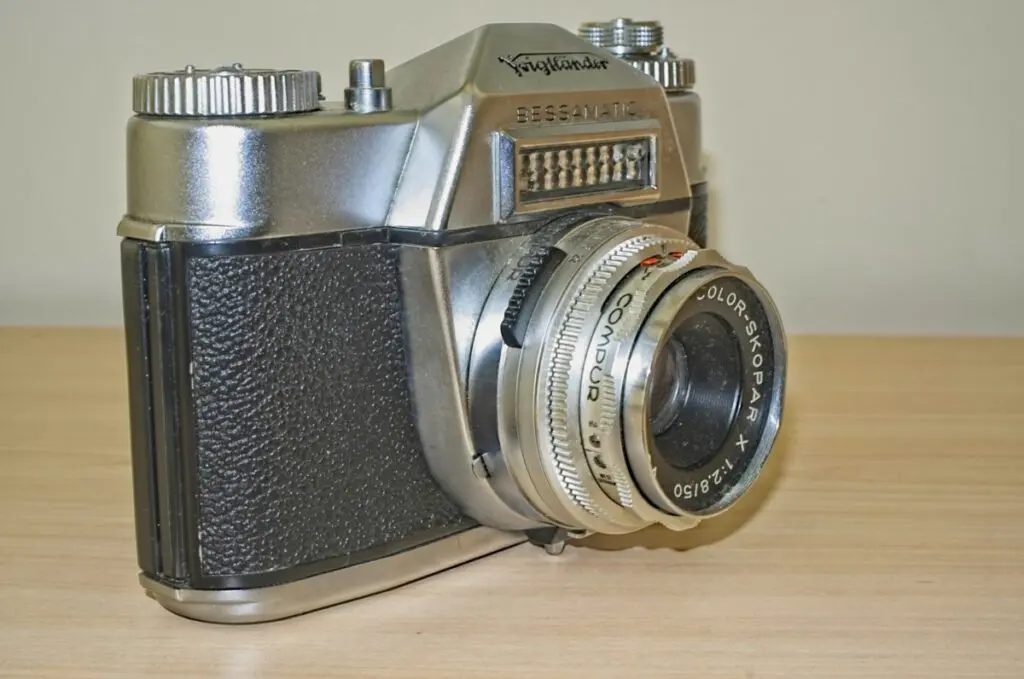
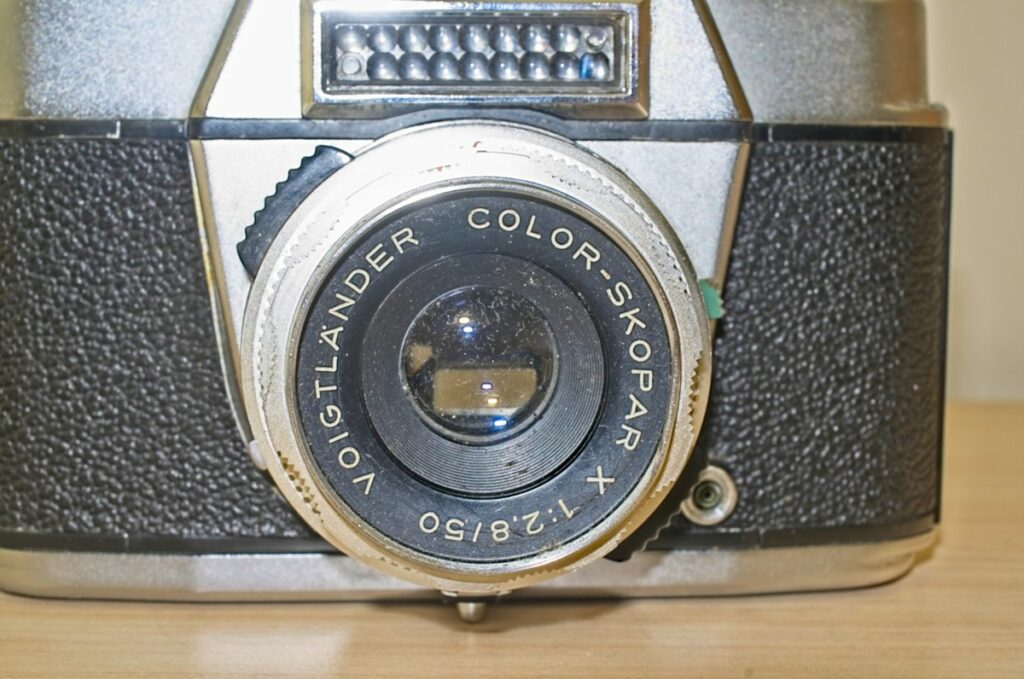
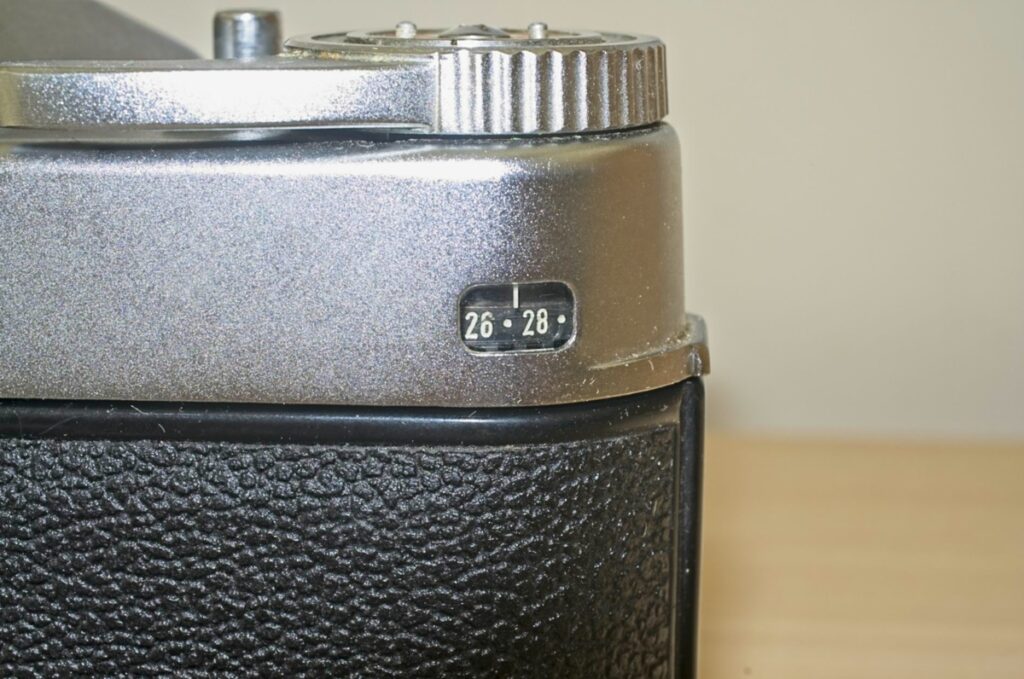
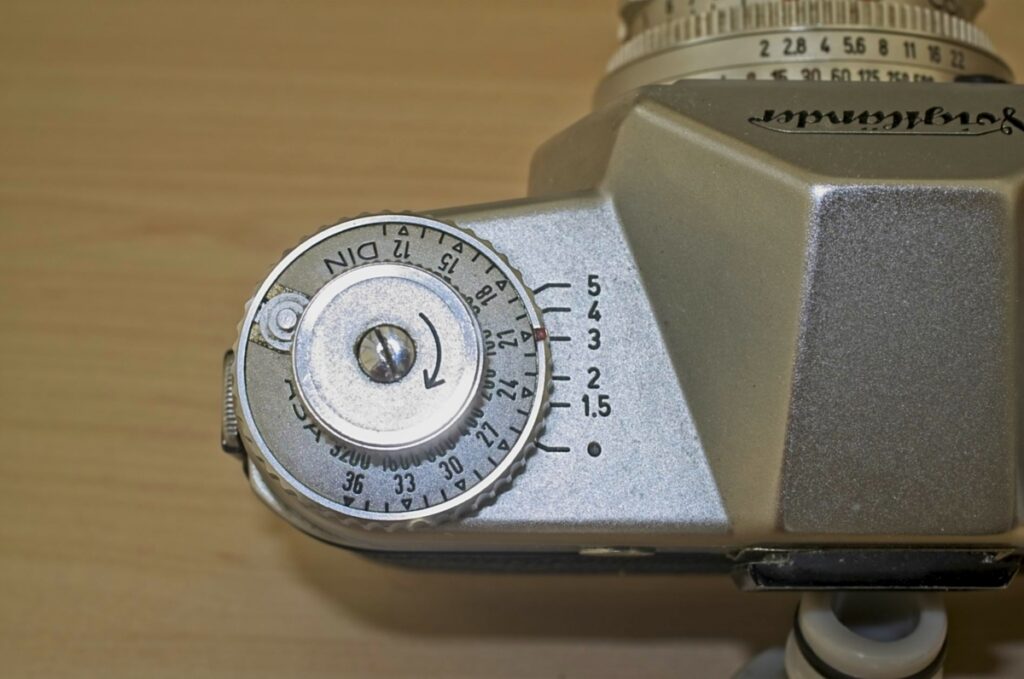
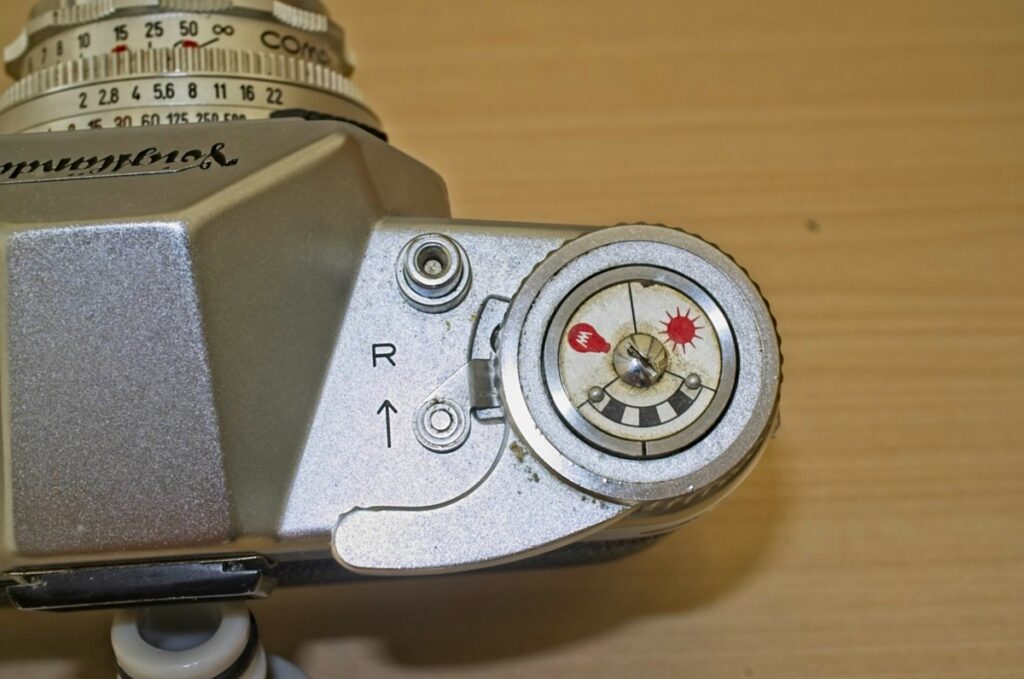
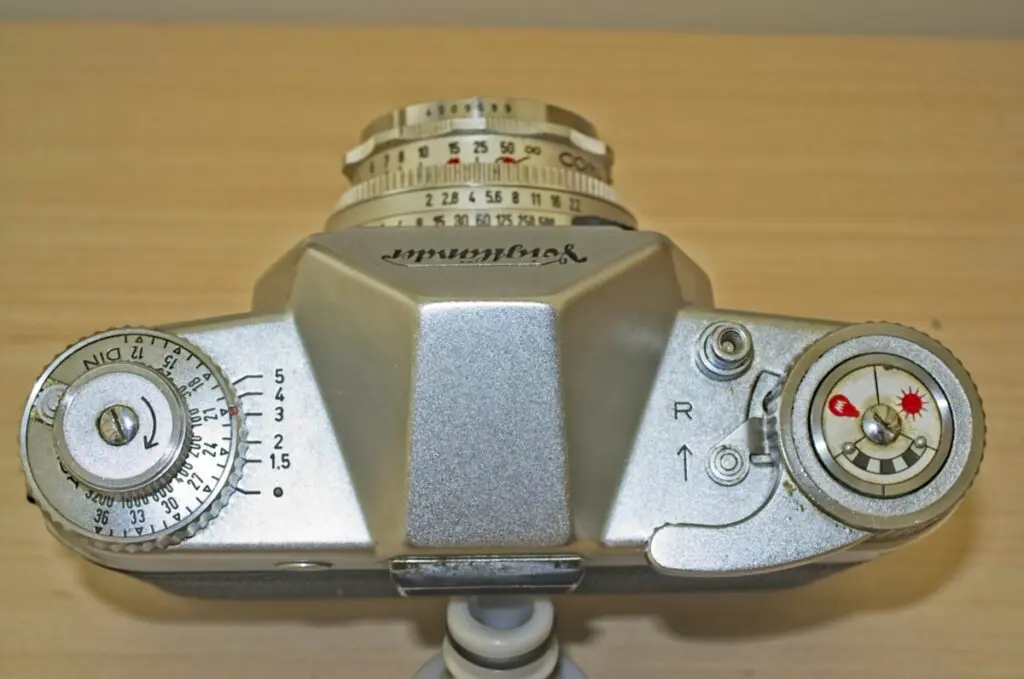
My Bessamatic Camera
I picked up this camera along with a Topcon RE Auto in an eBay sale for £25.
To be honest, I don’t think the seller knew exactly what he was selling because a working example of the Bessamatic would normally sell for more than that price by itself. Another clue was that he described it as a Yoighander camera.
Anyway, it seemed too good a deal to miss, so I purchased it in a ‘Buy in now’ sale for, as I said, £25 including postage.
Once I’d paid for the Bessamatic I found it took a very long time for the camera to arrive with me. So long in fact, that I messaged the seller to see if he had dispatched it and even though he assured me he had, I noticed when it eventually arrived that the actual postage date on the parcel was a couple of days after my message to him. I consoled myself with the knowledge that when he eventually posted it, it cost him nearly £17 to send it to me first class rather than the £5 I paid for postage.
Other than waiting a long time for it, the camera which arrived seems to be in very good condition. All the shutter speeds seem about right and although the aperture blades were a bit reluctant to open and close when I first received it, after a few hours use they settled down and are fine now.
Voigtlander Bessamatic Description
As I described earlier, the Bessamatic is a camera with the shutter mounted between the lens and the mirror, which makes it a rather complex beast to engineer. If you think about the shutter layout in an SLR it’s obvious that when the photographer wants to compose the image the shutter needs to be open, but the film has to be protected from the light entering the lens.
So the set of actions which have to happen in this style of SLR design are:
- As the film is advanced the shutter is opened
- At the same time the aperture in the lens is fully opened
- also a plate is raised or lowered across the film to stop the light entering
- The mirror is dropped down to deflect the image into the eyepiece.
Once the image is composed and focused, as the shutter release is pressed the camera then has to
- Close the shutter
- Lower or raise the plate across the film
- Raise the mirror out of the light path
- Stop the aperture down to the correct setting for the exposure the photographer has selected
- Open and close the shutter for the correct amount of time
You can see why this style of camera is more complex than the normal focal plane shutter arrangement!
Camera Details.
The most noticeable thing I found when I first picked the camera up and tried the shutter a few times was the feel and sound of quality engineering. This camera sounds wonderful when the shutter is cocked and fired – just like precision engineering should sound.
It is quite a bulky, heavy camera, however. Quite a lot heavier to carry around than a contemporary camera of more traditional design.
Loading with film
The Bessamatic is loaded with a standard 35 mm film cartridge which is fitted into the film chamber and threaded across in front of the exposure frame and onto the take-up reel which the film advance lever turns. All that is pretty standard stuff, but the slightly out of the ordinary setting is the frame counter.
On more modern film cameras the frame counter would automatically reset to 0 when the back of the camera was opened. On the Voigtlander Bessamatic it needs to be manually set to the correct setting using a thumb wheel built into the frame advance pillar. To make this work there is a small lever on the top of the camera next to the shutter release which is set to the ‘R’ position (this lever is also used to rewind the film), and then the thumb wheel turned until the frame advance is set to the same as the number of exposures of the film being loaded.
Once the frame counter is set, the film loaded and the back closed, each throw of the film advance decrements the frame counter by one frame.
Exposure
The camera is equipped with a selenium cell driven exposure meter which is pretty easy to use and oddly for a vintage camera still seems to be working accurately in my example. The light cell is mounted above the lens mount as can be seen in the pictures above.
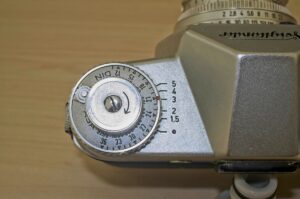
To set the exposure the film speed must have first been set using the small lever on the exposure setting dial.
With the film rewind lever pulled up, the small lever is pulled to the outside of the dial and then the whole inner section of the dial can be moved to align the correct film speed with the little red marker on the side of the dial. Both DIN and ASA settings are shown to do this.
With the film speed set and the photographer ready to take a picture the exposure is set like this:
First the shutter speed is selected by turning the black shutter adjustment fins on the back of the lens mount. It may be that the light meter dial also needs to be moved to select the required shutter speed if the camera is at one extreme of the light meter range.
Once the shutter speed is set the photographer looks through the viewfinder and composes the image. If the film hasn’t been advanced the viewfinder will be black so at this is the time to wind the film on if that’s the case.
Once the film is advanced there is a needle and a line and circle visible in the viewfinder and the light meter dial is turned until the two align. Once aligned the camera is set for the correct exposure and the picture can be taken. Alternatively, at this point the photographer can adjust the combination of shutter speed and aperture to get different artistic effects like blurring the background or freezing action just by readjusting the black shutter speed fins. As long as the camera doesn’t meet the end of the exposure range the correct exposure will remain set.
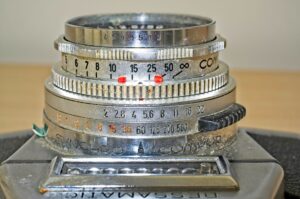
An interesting part of the exposure system is the depth of field indicator on the lens which automatically moves to show the distance range which will be in focus at the selected lens aperture.
This is shown on the picture to the right. This is very useful if the photographer wants to pre-set the focus, so they can rapidly take pictures.
Another really useful aspect of the exposure system on the Bessamatic is the filter compensation.
On the picture of the light meter dial above there are some numbers written by the side of the dial. These are compensation factors for filters and are used to make sure the exposure is still correct after a filter has been fitted to the camera.
These days not many people use filters when taking pictures because any effects are easy to apply digitally after the picture has been taken, but when this camera was a popular, current model filters were used for many pictures, especially in black & white photography. For example, a red filter would be used to enhance clouds in a black & white picture.
The only problem with adding filters is that they block some of the light, so the exposure set on the camera needed to be altered to compensate. On the Bessamatic the exposure could be set and then when the filter was added the compensation factor (which was printed on the rim of the filter) could be dialled in using the numbers on the light meter dial to get the correct compensation.
Lens and focusing
The lens fitted to the Bessamatic is a Voigtlander Color-Skopar X 50 mm f/2.8 unit with a bayonet mount. The lens mount is actually the same basic design as used on the Retina Reflex, although there are slight mechanical differences which stop the lenses being interchangeable. It is apparently possible to modify either lens type to fit the other camera if desired, however.
The focusing operation is made easier by a split lever focusing aid in the middle of the viewfinder. In my particular camera the viewfinder has quite a few black dust spots and would be better with a good clean, but I’m a bit wary of taking the top off considering how complex the camera is.
Voigtlander Bessamatic Specification
- Voigtlander Bessamatic 35mm SLR camera
- Leaf shutter offering 1sec to 1/500sec shutter speeds
- Automatic depth of field indicator
- Split level focusing assistance
- Integrated, coupled light meter
- Viewfinder exposure setting
- ASA 12 to 3200 film speed range
- Filter exposure compensation
- Film type indicator
- Table top stand and tripod bush
- Bayonet lens mount
- Automatic frame counter
- Flash sync socket for X or M flash
- Self Timer
- Voigtlander Color-Skopar 50mm f/2.8 lens
- Lens Ser No:4909589
- Body Ser No: 28251
- Manual available on-line here
Discover more from Everything Vintage
Subscribe to get the latest posts sent to your email.

